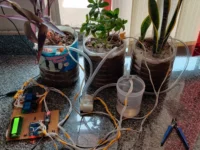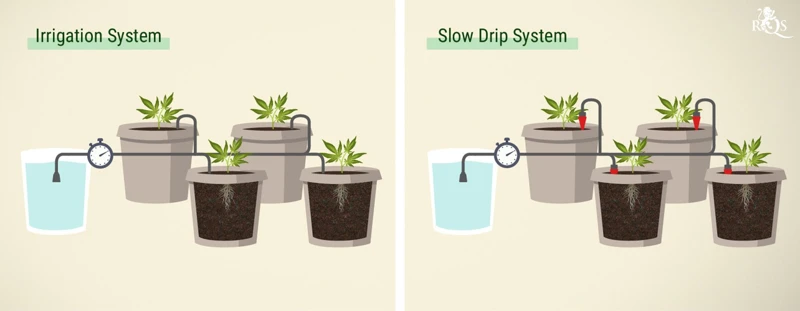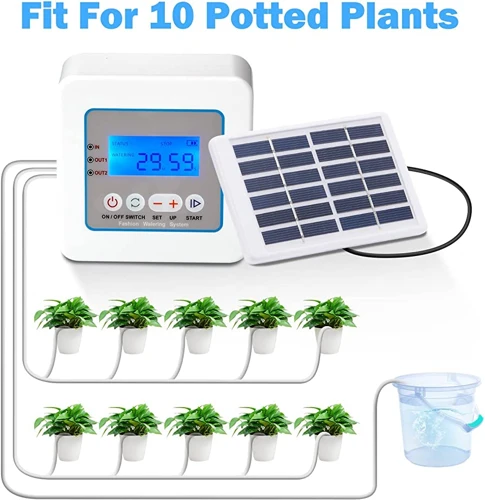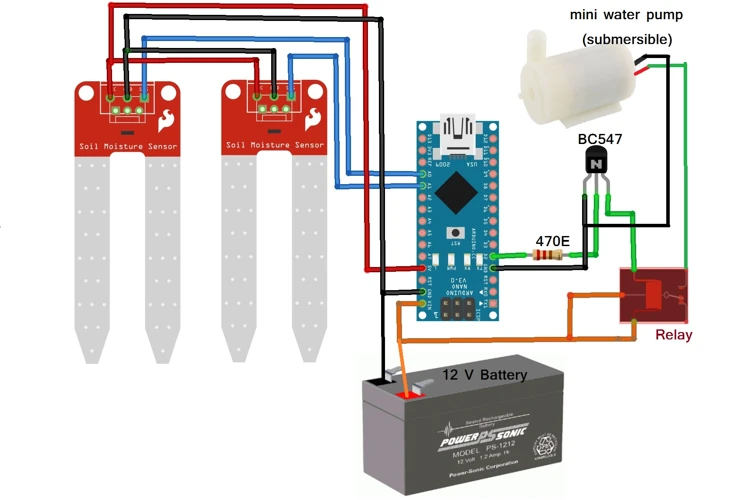
Automated Watering Systems: The Solution to Under-Watering Cannabis Plants
Growing cannabis plants can be a rewarding and exciting experience, but it also requires a lot of effort and attention. One of the most common problems cannabis growers face is under-watering their plants. This occurs when the plants do not receive enough water, which results in wilting and even death. While many growers struggle with this issue, there is a solution that can make growing easier and more efficient. With the help of automated watering systems, growers can prevent under-watering and ensure their plants receive the proper amount of hydration. In this article, we’ll explore the benefits of using this technology and provide a step-by-step guide on how to choose, install, and maintain an automated watering system.
The Problem of Under-Watering Cannabis Plants
Contents
As much as cannabis plants require an appropriate amount of water to prosper, the issue of under-watering is a prevalent one that affects many growers. Under-watering is a complicated issue because it can easily go unnoticed and cause harm to your plants. The lack of water leads to a buildup of salts, which can impede nutrient uptake, stunt plant development, or even lead to plant death. Understanding the causes and consequences of under-watering is crucial in preventing it from occurring. To learn more about identifying the signs of under-watering and the effects it may have on your cannabis plants, check out our guide on signs of under-watering or our article on underwatered cannabis plants.
1.1 Causes of Under-Watering
Under-watering is a common problem among cannabis cultivators, which can lead to stunted plant growth and decreased yield. There are several causes of under-watering that growers should be aware of, including:
| Cause | Description |
|---|---|
| Inadequate watering schedule | Cannabis plants require frequent watering to stay healthy. If the watering schedule is not consistent or sufficient, it can lead to under-watering. |
| Lack of irrigation equipment | Without proper irrigation equipment, it can be difficult to ensure that water is being distributed evenly throughout the grow space. This can lead to sections of the grow space being under-watered. |
| Incorrect pot size | The size of the pot used to grow cannabis can impact the plant’s water intake. If the pot is too small, the plant may not have enough room for water storage and uptake, leading to under-watering. |
| Incorrect soil type | The type of soil used can impact the plant’s ability to retain and absorb water. If the soil is too sandy or compacted, it may not retain enough water, leading to under-watering. |
| Low humidity levels | Low humidity levels can cause water to evaporate more quickly, leading to under-watering. This is especially true in dry and arid climates. |
It is important for growers to be aware of these causes and take steps to prevent under-watering in order to ensure the health and productivity of their cannabis plants.
1.2 Effects of Under-Watering
Under-watering cannabis plants can lead to various negative effects on their growth and yields. These effects can be both short-term and long-term, affecting the overall health and quality of the plant. Here are some of the effects of under-watering:
| Effect of Under-Watering | Description |
|---|---|
| Wilting | When a plant does not receive enough water, its leaves droop and wilt as it tries to conserve moisture. |
| Stunted Growth | Under-watering can slow down the growth of a cannabis plant, causing it to remain smaller than it should be. |
| Yellowing of Leaves | As a plant becomes dehydrated due to under-watering, its leaves can start turning yellow, indicating stress and damage. |
| Poor Flower Development | If a cannabis plant experiences under-watering during its flowering stage, it can lead to decreased yields and lower quality buds. |
| Higher Risk of Pests and Diseases | A dehydrated plant is more susceptible to pests and diseases, as its weakened state makes it less able to fight off infections. |
All of these effects of under-watering can have detrimental effects on the health and growth of cannabis plants. Automated watering systems can help prevent these negative effects by ensuring that plants receive the appropriate amount of water consistently.
Automated Watering Systems
Ensuring your cannabis plants receive the appropriate amount of water is crucial for their proper growth and development. With the use of technology, automated watering systems have become an innovative solution for preventing under-watering. These systems can help take away the guesswork of watering schedules while also saving you precious time and effort in the long run. In this section, we will explore different types of automated watering systems, their advantages, and how to choose the right one for your cannabis plants.
2.1 Types of Automated Watering Systems
Automated watering systems come in various types, each designed to fit specific needs. Here are some of the most common types:
- Drip Irrigation Systems: Drip irrigation systems are the most common type of automated watering system. A network of small tubes runs along the base of the plants, with tiny holes allowing water to slowly and steadily drip onto the soil around the roots. This system helps to prevent water wastage by delivering water directly to the roots where it is needed.
- Sprinkler Irrigation Systems: Sprinkler irrigation systems are best used for larger gardens or greenhouses. These systems use a network of pipes and sprinkler heads to deliver water to plants. They are most effective when used in conjunction with a timer, which ensures that plants are watered at specific intervals.
- Micro-Spray Irrigation Systems: Micro-spray irrigation systems deliver a small amount of water to the plants over time. These systems use a network of tubes and nozzles that mist the plants, providing a gentle and steady supply of water. These systems are ideal for areas with low water pressure, as they use less water than most other types of irrigation systems.
- Flood and Drain Systems: Flood and drain systems work by flooding a container with nutrient-rich water, and then draining the water away. This creates a cycle of wet and dry conditions, which helps promote healthy root growth. These systems are ideal for larger gardens or greenhouses, and can be customized to fit specific needs.
- Aeroponics: Aeroponic systems use mist to deliver water and nutrients to the plants. Plants are grown without soil, and the roots are suspended in the air. This type of system uses less water than traditional hydroponic systems, and can be ideal for indoor growing or for areas with limited water resources.
Choosing the right type of automated watering system depends on a number of factors, including the size of the garden or greenhouse, the plants being grown, and the available water resources. It is important to carefully consider all of these factors before choosing a system that will meet your specific needs.
2.2 Advantages of Automated Watering Systems
Automated watering systems bring numerous advantages to cannabis growers. Here are some of the benefits that come with using these systems:
- Consistency: Automated watering systems provide an even and consistent supply of water to the plants, ensuring that they receive the right amount of water at the appropriate time.
- Efficiency: These systems are designed to save time, water, and other resources. They water multiple plants at once, reducing the amount of labor, water, and nutrients needed for manual watering.
- Reduced Risk of Over/Under-Watering: It’s easy to over-water or under-water cannabis plants, which can impact their growth and health. Automated watering systems take the guesswork out of this process by delivering the right amount of water precisely when it’s needed.
- Improved Health and Yield: Proper watering is critical to the health and productivity of cannabis plants. Automated watering systems ensure that plants get the optimal amount of water, improving their growth rate and ultimately leading to higher yield and quality.
- Easy to Control: These systems are usually easy to control and can be adjusted based on the plants’ specific needs. This makes it possible to fine-tune the watering schedule and ensure the plants thrive.
- Customizable: Automated watering systems come in different shapes, sizes, and types to suit different growing needs. This makes it possible to customize the watering process according to the specific growing conditions and available resources.
Automated watering systems offer numerous advantages over manual watering methods. From improved growth and yield to reduced resource usage and greater control, these systems can help cannabis growers achieve their goals and maximize their results.
How to Choose the Right Automated Watering System
When it comes to choosing the right automated watering system for your cannabis plants, there are several factors to consider in order to ensure optimal growth and yield. With so many options available in the market, it can be overwhelming to navigate through the different features and functionalities of each system. However, by understanding your specific watering needs and considering important factors such as system type, capacity, and compatibility with your existing setup, you can make an informed decision that will ultimately benefit both you and your plants. In this section, we will explore the key factors to consider when choosing an automated watering system and highlight some of the top options available.
3.1 Considerations for Choosing an Automated Watering System
When choosing an automated watering system for your cannabis plants, there are various factors to consider to ensure that you get the best system for your needs. Here are some of the key considerations:
- Your Budget: Automated watering systems come at different price points, so it is important to determine how much you are willing to spend before making a purchase. The more advanced and sophisticated the system, the more costly it is likely to be.
- Type of Plants: Different cannabis strains and varieties have varying water requirements. Be sure to choose an automated watering system that can effectively cater to the specific moisture needs of your plants.
- Garden Size: Consider the size of your garden or grow room when choosing an automated watering system. Larger gardens will require systems with higher water capacities and longer irrigation lines.
- Water Quality: The quality of the water you are using is another important factor to consider. If your water source has impurities, then you may need to choose a system that is equipped with filtration mechanisms to ensure that the water supplied to your plants is clean.
- Level of Control: Different automated watering systems offer varying degrees of control. Determine whether you want a system that allows for manual control, remote control, or preset scheduling.
- Power Source: Consider the power source needed to operate the automated watering system. Some systems require direct electrical connections, while others rely on batteries or solar power.
- Climate and Environment: The climate and environment in which your cannabis plants are growing can also influence the type of automated watering system to choose. For instance, if you are growing in a hot and dry area, you may need a system that can provide more frequent watering.
By taking these considerations into account, you can make an informed decision when selecting an automated watering system that caters to the specific needs of your cannabis plants.
3.2 Top Automated Watering Systems Available in the Market
When it comes to choosing the right automated watering system for your cannabis plants, there are plenty of options available in the market. Here are some of the top automated watering systems that can help you prevent under-watering:
1. Blumat Automatic Watering System: This system uses a ceramic cone to detect the moisture levels in the soil and release water accordingly. It can be adjusted to release water at specific intervals, making it a great option for those who want controlled and efficient watering.
2. AquaBloom Automatic Watering System: This system uses a timer to release water at specific intervals. It also includes a drainage system to prevent over-watering and root rot. This is a great option for those who want a reliable and low-maintenance system.
3. Raindrip Automatic Watering System: This system uses drip irrigation technology to release water directly to the roots of the plants. It includes a timer that can be adjusted to release water at specific intervals. This is a good option for those who want a precise and targeted watering system.
4. Orbit B-hyve Smart Hose Faucet Timer: This system can be attached to your outdoor faucet and controlled through a smartphone app. It includes a weather sensor that adjusts the watering schedule based on the weather conditions. This is a great option for those who want a high-tech and customizable system.
5. Gardena Micro-Drip Irrigation System: This system uses drip irrigation technology to release water to multiple plants at once. It includes a timer that can be adjusted to release water at specific intervals. This is a good option for those who want a low-maintenance and efficient watering system.
When choosing the right automated watering system, it is important to consider factors such as the size of your grow space, the watering needs of your plants, and your budget. By finding the right system for your specific needs, you can ensure that your cannabis plants remain healthy and well-watered at all times.
Installation and Maintenance of Automated Watering Systems
So, you’ve finally decided to take the plunge and invest in an automated watering system for your cannabis plants. Congratulations! With this decision, you’re not only going to save your time and energy, but you’ll also prevent under-watering and over-watering of your plants. To ensure that your system runs efficiently, it’s important to learn how to install and maintain it properly. In this section, we’ll provide you with a step-by-step installation guide and some tips on how to maintain your automated watering system to ensure your plants remain healthy and strong. Let’s dive in!
4.1 Step-by-Step Installation Guide
When it comes to installing an automated watering system, it is important to follow the step-by-step guide carefully to ensure that the system is properly installed and functions as intended. Here is a guide to help you get started:
Step 1: Plan and Prepare
Before you begin installing your automated watering system, it is important to plan and prepare. This includes determining the number of plants you have, the size and layout of your grow space, and the water source available. You should also make sure you have all the necessary tools and materials for the installation.
Step 2: Lay Out the Tubing
Using a tubing cutter, cut the main water line and lay out the tubing according to your planned design. You may need to use T-fittings, elbow fittings, or other connectors to create the correct layout.
Step 3: Install the Drip Emitters or Sprayers
Once the tubing is laid out, you will need to install the drip emitters or sprayers that will deliver water to your plants. These should be spaced out evenly to ensure each plant receives sufficient water.
Step 4: Connect the Water Source
Next, connect the tubing to the water source. This may involve using a pressure regulator, filter, and timer to ensure the water is delivered at the correct pressure and frequency.
Step 5: Test the System
Before planting your cannabis, it is important to test the system to ensure it is functioning properly. Turn on the water source and check for leaks or any other issues.
Step 6: Plant Your Cannabis
Once you have confirmed that the automated watering system is working correctly, you can plant your cannabis. Be sure to monitor the system and adjust as needed to ensure your plants are receiving the appropriate amount of water.
Installing an automated watering system may take some time and effort, but it can save you time and money in the long run by ensuring your plants receive the proper amount of water without any wasted resources.
4.2 Tips for Maintaining Automated Watering Systems
Maintaining automated watering systems is important to ensure that your cannabis plants receive the correct amount of water consistently. Here are some tips to help you maintain your automated watering system:
- Check the water level regularly: Make sure to check the water level in your reservoir or water source regularly to ensure that the system has enough water. If the water level is low, fill it up immediately.
- Clean the system regularly: Dirt, debris, and algae can clog up your automated watering system, causing it to malfunction. Clean the system using a mild solution of water and vinegar every few weeks to keep it free from clogs.
- Replace filters: Some automated watering systems have filters that need to be replaced periodically. Check the manufacturer’s instructions to find out when you need to replace the filter, and make sure to do so promptly.
- Check for leaks: Leaks can cause serious damage to your plants and can waste water. Check the hoses, fittings, and connections for leaks regularly, and fix any issues as soon as they arise.
- Calibrate the system: If your automated watering system has a dosing system, make sure to calibrate it regularly to ensure that it’s dispensing the correct amount of water and nutrients. Follow the manufacturer’s instructions to calibrate your system correctly.
- Keep the system in good condition: Automated watering systems can last for many years if they’re kept in good condition. Regular maintenance and cleaning can help to extend the lifespan of your system and ensure that it keeps working effectively.
- Ensure power supply: Some automated watering systems require a power source. Check the power supply regularly to ensure that it’s functioning correctly. If you’re using batteries, replace them regularly to ensure that the system keeps working.
By following these tips, you can ensure that your automated watering system keeps working effectively and that your cannabis plants receive the correct amount of water and nutrients they need to grow healthy and strong.
Conclusion
In conclusion, automated watering systems provide a solution to the problem of under-watering cannabis plants. These systems come in different types and offer numerous advantages over manual watering methods.
Not only do they conserve water and reduce water bills, but they also eliminate the risk of over or under-watering, which is crucial for the optimal growth and development of cannabis plants.
When choosing an automated watering system, it’s important to consider factors such as the size of your growing space, the type of cannabis plants you are growing, and your budget. Top automated watering systems in the market include drip irrigation systems, ebb and flow systems, and aeroponic systems.
Installation of these systems may require some technical expertise, but following a step-by-step guide can make the process much easier. Maintenance of these systems may also require some effort, but regular inspections and cleaning can prevent clogging and ensure the system continues to function optimally.
In summary, automated watering systems offer a convenient and efficient solution to the problem of under-watering cannabis plants. By choosing the right system, ensuring proper installation, and performing regular maintenance, growers can ensure their plants receive the proper amount of water for optimal growth and yield.
Frequently Asked Questions
How often should I water my cannabis plants with an automated watering system?
The frequency with which you should water your cannabis plants will depend on a variety of factors, such as the size of your plants, the environment they are in, and the type of automated watering system you are using. It’s important to monitor your plants closely and adjust your watering schedule as needed.
Can I use an automated watering system for outdoor growing?
Yes, you can definitely use an automated watering system for outdoor growing. In fact, it can be especially helpful in areas where rainfall is inconsistent or scarce.
What happens if my automated watering system malfunctions?
If your automated watering system malfunctions, it’s important to address the issue as quickly as possible to avoid underwatering or overwatering your plants. Regular maintenance and inspections can help prevent malfunctions, but it’s always a good idea to have a backup plan in case something does go wrong.
Do I need special training to install an automated watering system?
While some systems may require more technical knowledge than others, most automated watering systems are designed to be easy to install and use. You should be able to find installation instructions and resources online, as well as support from the manufacturer or retailer.
Can I customize the settings on my automated watering system?
Many automated watering systems offer customizable settings, such as watering frequency and duration, to help you ensure that your plants are getting the right amount of water at the right time.
Can I use an automated watering system with any type of growing medium?
Automated watering systems can generally be used with a variety of growing mediums, including soil, hydroponics, and other soilless mediums.
Do I need to clean my automated watering system regularly?
Yes, regular cleaning is important to ensure that your automated watering system is functioning properly and to prevent the buildup of bacteria and other contaminants. Follow the manufacturer’s instructions for cleaning and maintenance, and consider using a water filter to improve the quality of the water used in your system.
Can automated watering systems be used with other types of plants?
Yes, automated watering systems can be used with many different types of plants besides cannabis. They can be especially helpful for maintaining consistent moisture levels in plants that are sensitive to changes in watering.
What should I do if I notice signs of overwatering or underwatering?
If you notice signs of overwatering or underwatering in your plants, adjust your watering schedule and/or the settings on your automated watering system accordingly. Be sure to monitor your plants closely to ensure that they are responding well to the changes you make.
Can automated watering systems help conserve water?
Yes, automated watering systems can help conserve water by delivering precise amounts of water directly to the plants’ roots, reducing runoff and evaporation. They can also be programmed to water during optimal times to minimize water loss due to heat and wind.





